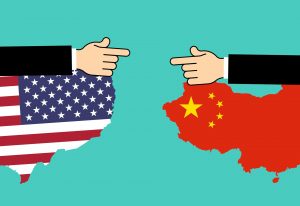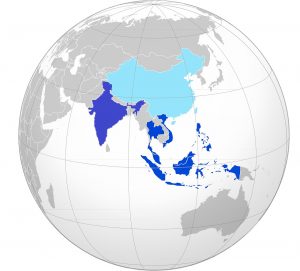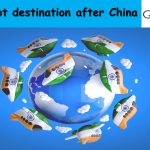Endgame of China dependence?
Realizing the overreliance on China
The governments around the world as well as their health care systems are working to stop the spread of Covid-19 and treating those infected. On the other hand, this has raised concerns across several industries such as auto component and pharmaceuticals suppliers, with numerous manufacturers struggling to contain the impact of the pandemic on their supply chains. Businesses worldwide are working on reducing their China dependence urgently. Companies across all sectors, which import many parts from China have seen their supply chains greatly disturbed. Resilinc, a supply-chain-mapping and risk-monitoring company, has highlighted the dependence of the automotive, industrial, and heavy machinery sectors on China, with there being 2730 facilities owned by different top companies of the world in the quarantined areas alone.
Just when we thought that the US-China trade war was beginning to fade out, the coronavirus crisis has shown just how heavily dependent foreign companies are on China for their production and business, a sentiment echoed by Macy’s former CEO, Terry Lundgren. According to Cowen analyst Oliver Chen, about 20% of the retail supply chain of the United States is exposed to China. The shutdown of large portions of the Chinese economy has sent shockwaves across continents. Logistics and movement have been hampered, there has been a dent in consumer demand, and all this has led to businesses struggling to get operations back to normal.
Not just one reason to move out of China..
 According to Michael Dunne, director of ZoZo, a China-based automotive consulting group, the inclination of manufacturers towards reconsidering China as a source began well before the pandemic. The tariffs created by the trade war with Beijing forced many companies to realize that they depended too much on China and were susceptible if the terms of trade were altered. A number of companies were well into a search when the year started for other places in Asia and the Pacific region to source materials or to establish manufacturing. The COVID-19 pandemic has only accelerated the push to move supply chains out of China.
According to Michael Dunne, director of ZoZo, a China-based automotive consulting group, the inclination of manufacturers towards reconsidering China as a source began well before the pandemic. The tariffs created by the trade war with Beijing forced many companies to realize that they depended too much on China and were susceptible if the terms of trade were altered. A number of companies were well into a search when the year started for other places in Asia and the Pacific region to source materials or to establish manufacturing. The COVID-19 pandemic has only accelerated the push to move supply chains out of China.
As per the nonprofit Institute for Supply Management, 62% of companies report delays in receiving orders from China and that 53% report having a difficult time even getting information regarding what is happening inside China. According to ISM chief, Thomas Derry, the businesses who diversified their supply chains are the ones who are dealing with the virus most effectively.
 It does not mean it is the end of the road for China. However, it is important to note that China’s standing as a one-stop shop could now be changing. The strategy of putting all the eggs in one basket is being reconsidered by companies, who are now looking at diversifying their supply chains away from China after the coronavirus pandemic. Companies around the world will alter their supply chains to be less dependent on China in the wake of the coronavirus crisis, according to investor Mark Mobius. According to Independent analyst Fraser Howie, the dependency on China will not be ignored completely but will be reduced.
It does not mean it is the end of the road for China. However, it is important to note that China’s standing as a one-stop shop could now be changing. The strategy of putting all the eggs in one basket is being reconsidered by companies, who are now looking at diversifying their supply chains away from China after the coronavirus pandemic. Companies around the world will alter their supply chains to be less dependent on China in the wake of the coronavirus crisis, according to investor Mark Mobius. According to Independent analyst Fraser Howie, the dependency on China will not be ignored completely but will be reduced.
An exodus on the cards?
 Until now, China has been the production hub for electronics and automotive due to abundant availability of raw material, technological innovations, skilled labour, and business-friendly laws. However, due to the US-China trade war, the increasing cost of labour, as well as the current outbreak of the coronavirus, this scenario has already started changing. Many manufacturing companies have been forced to relocate their production hubs to other low-cost Asian countries.
Until now, China has been the production hub for electronics and automotive due to abundant availability of raw material, technological innovations, skilled labour, and business-friendly laws. However, due to the US-China trade war, the increasing cost of labour, as well as the current outbreak of the coronavirus, this scenario has already started changing. Many manufacturing companies have been forced to relocate their production hubs to other low-cost Asian countries.
A majority of the nations such as the US, Japan, South Korea rely on China currently; however, they are contemplating making the switch after China’s debacle in managing the deadly virus outbreak. Countries are insisting on their corporations to either relocate production units or set up alternate units outside China.
Japan has earmarked $2.2 billion of its record economic stimulus package to help its manufacturers shift production out of China as the coronavirus disrupts supply chains between the major trading partners.
A number of manufacturers and suppliers are or have already been on the move.
- Mitsubishi has opened its assembly plant in a southern province of Vietnam.
- ZF, an automotive manufacturer based in Germany, has also opened its plant in Vietnam.
- Honda Motor’s major car parts supplier Ftech is set to move its brake pedal production from virus-hit Wuhan, China, to the Philippines.
- Chinese tire maker Sailun Tire is shifting its manufacturing line to Thailand.
- Suzuki is considering sourcing vehicle components from outside China.
- One auto supplier has already shifted production of parts for Mazda Motor Corp from the Chinese coastal province of Jiangsu to central Mexico’s Guanajuato State.
- Koito Manufacturing, the world’s biggest maker of automotive lighting and a supplier to Toyota, Nissan, and others, is preparing to move some production elsewhere to fulfil export orders.
- Kasai Kogyo, which supplies Honda with interior door trim and roof parts, said it was looking at the possibility of shifting production from its Wuhan plant to one of the many plants it operates in North America, Europe, and Asia.
 Looking at all this, one thing is abundantly clear that manufacturers and suppliers are already planning either to move out of China or alter their supply chains to reduce their dependence on China. Those dependent on China are having second thoughts and thinking of diversifying their supply chains so as to be better prepared in circumstances like the COVID-19 pandemic.
Looking at all this, one thing is abundantly clear that manufacturers and suppliers are already planning either to move out of China or alter their supply chains to reduce their dependence on China. Those dependent on China are having second thoughts and thinking of diversifying their supply chains so as to be better prepared in circumstances like the COVID-19 pandemic.
In a post COVID-19 scenario, countries like US, Korea and Japan, which have huge dependency on China, are looking at alternatives and India could emerge as a preferred destination, due to the large market size and the fact that manufacturers can sell their products domestically, unlike other countries where the only option is to export owing to small market size in the home country of the manufacturing unit. In the next blog, we will be looking at why India is becoming an attractive destination for manufacturers and suppliers to move to, especially after the COVID-19 crisis.
Your feedback and comments are highly appreciated!
(Featured Image Source: China Uncensored)




